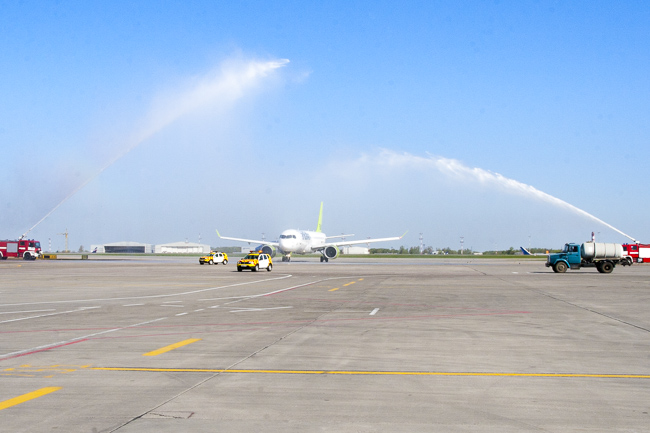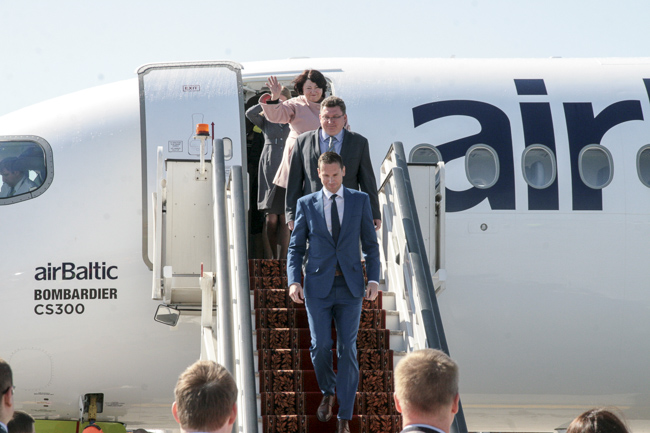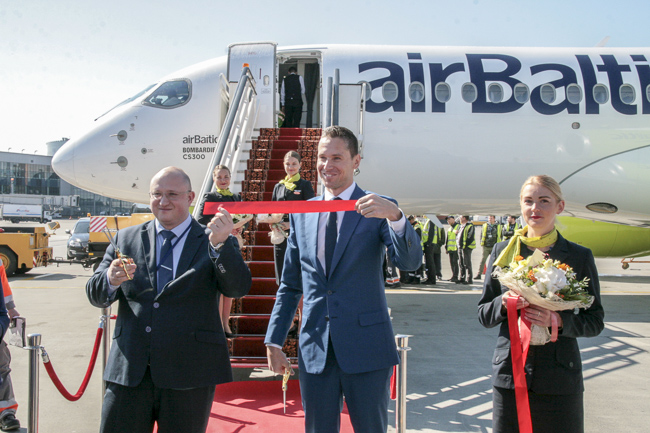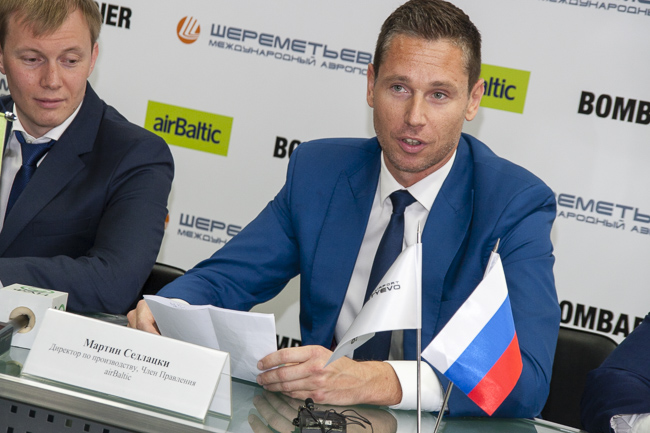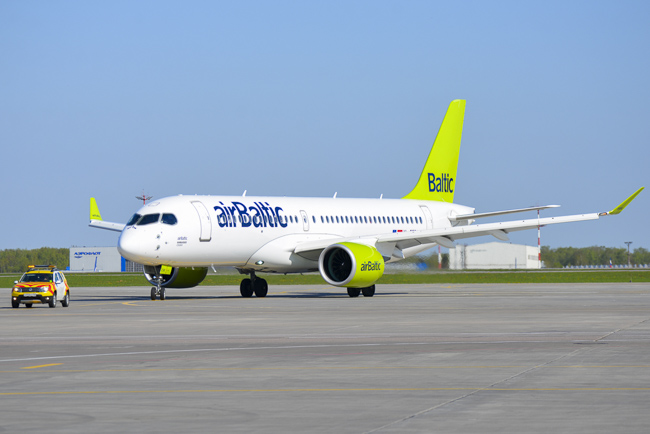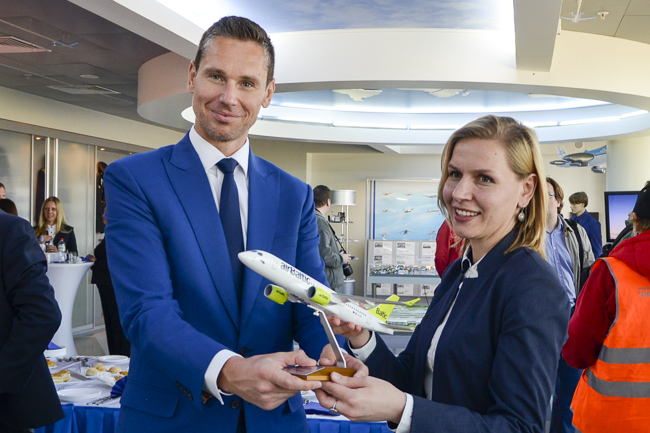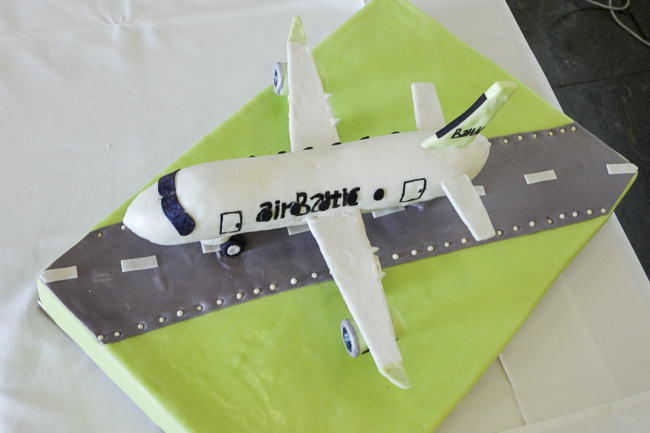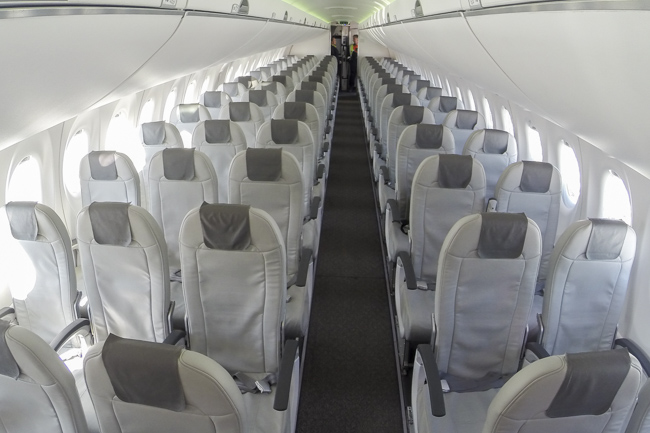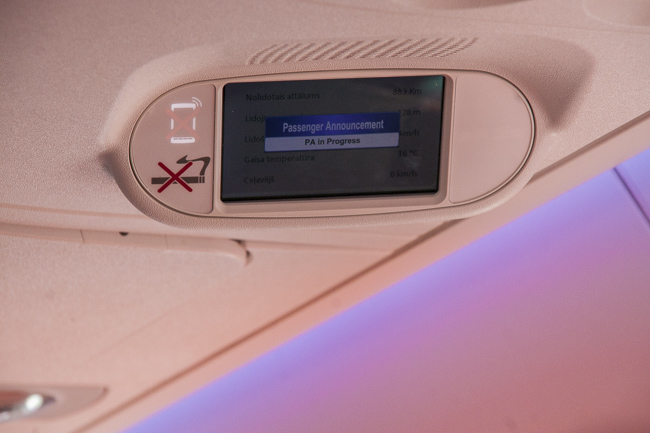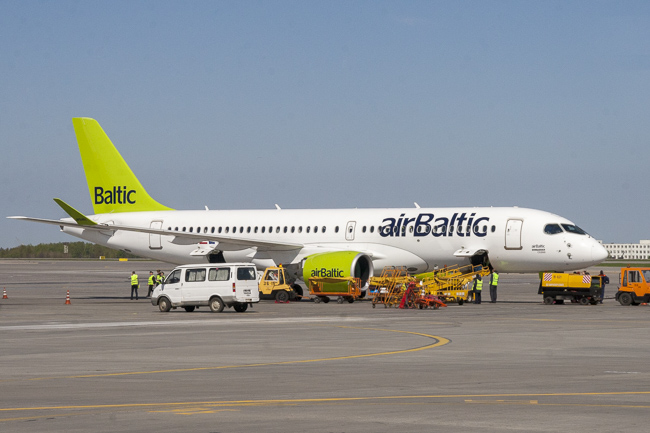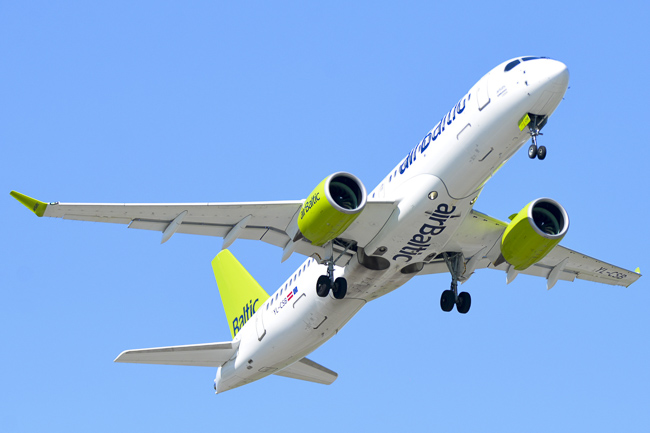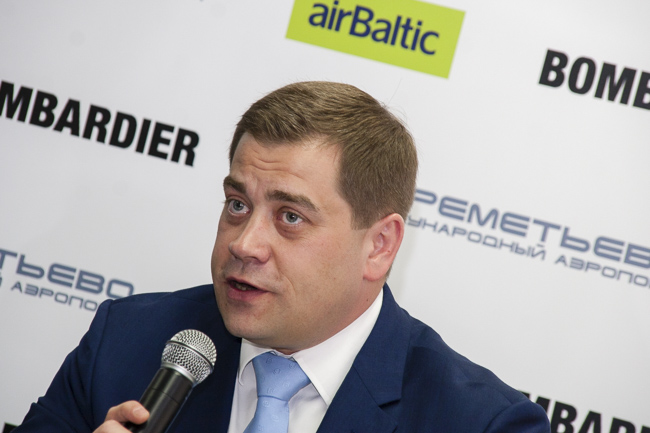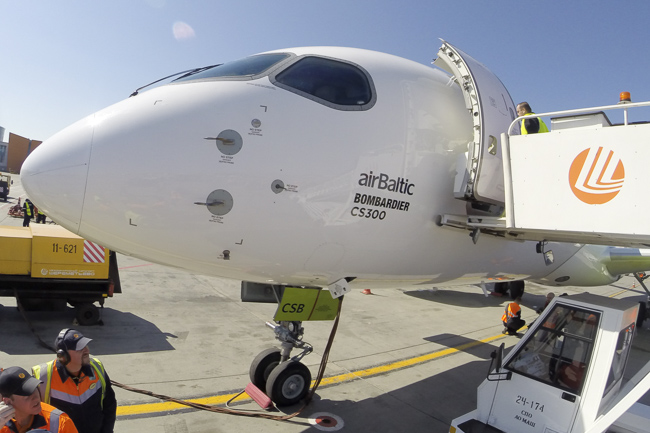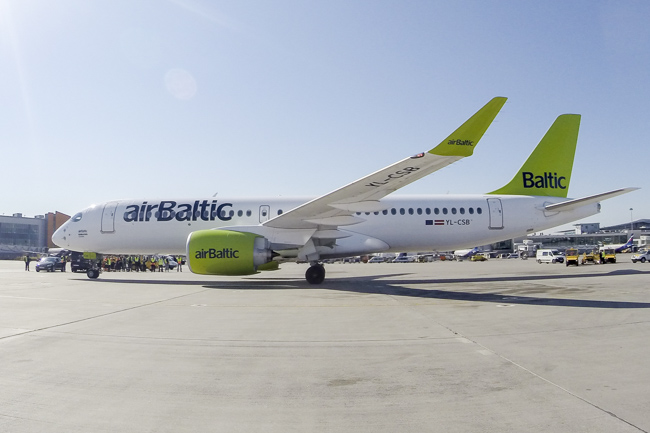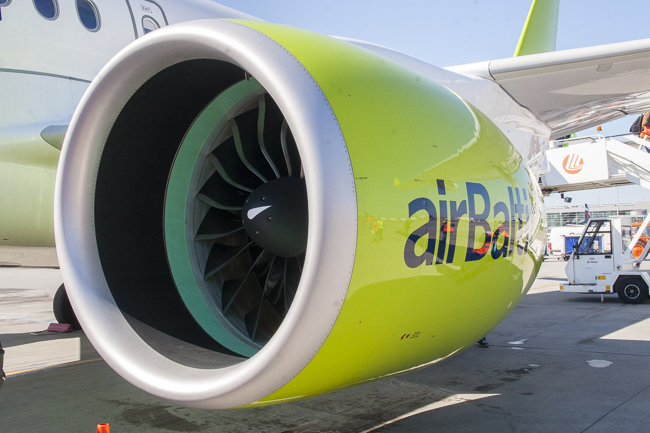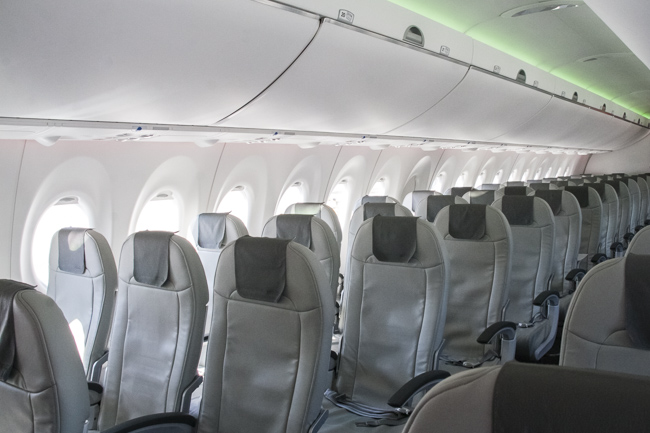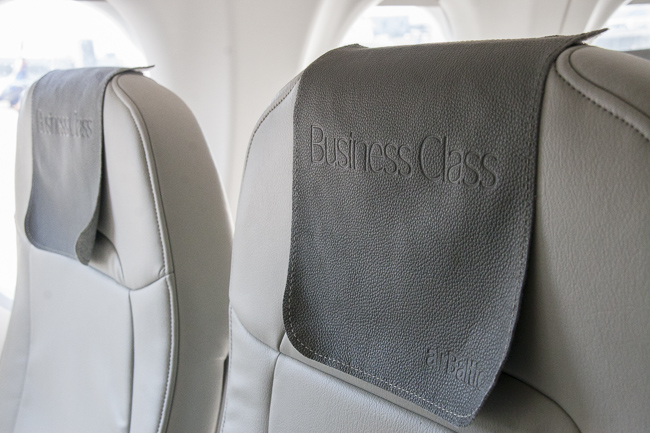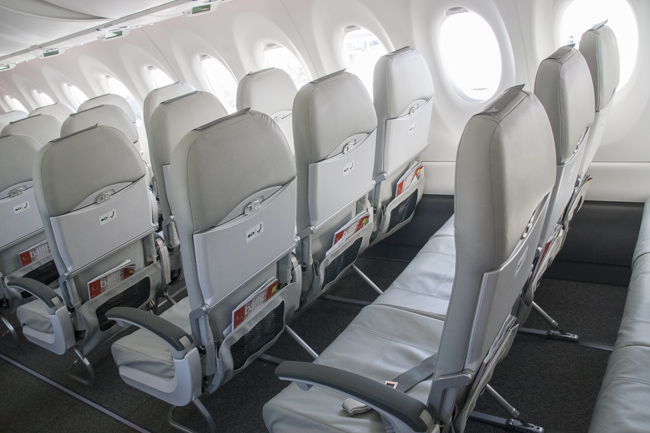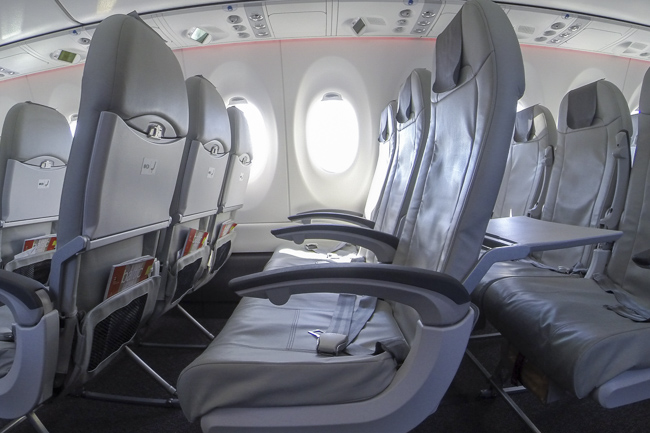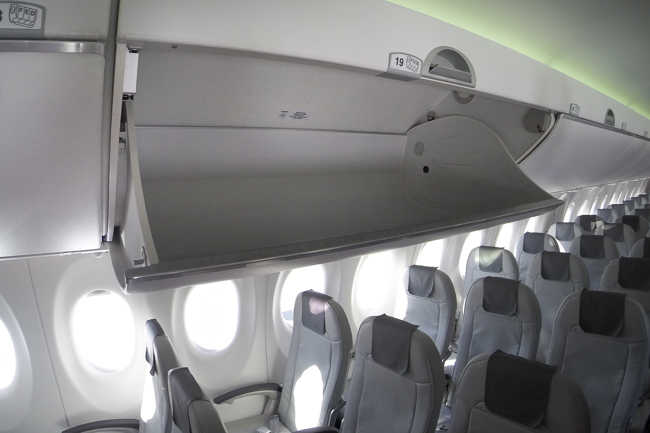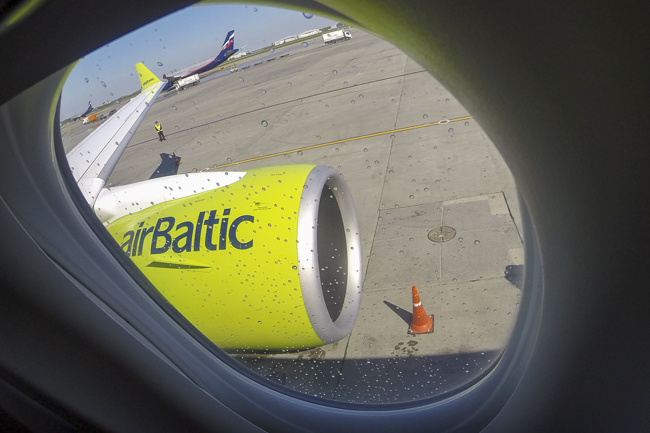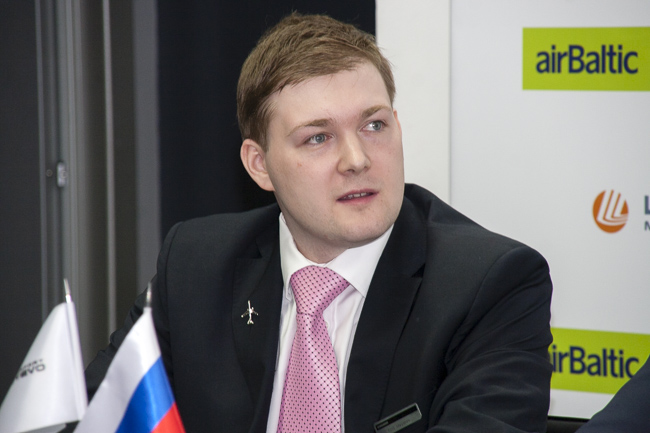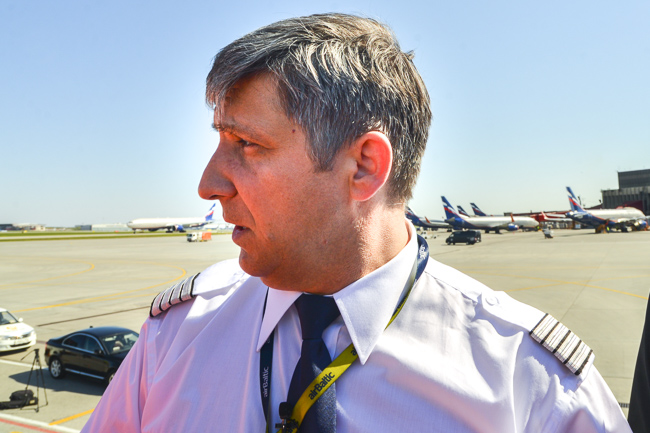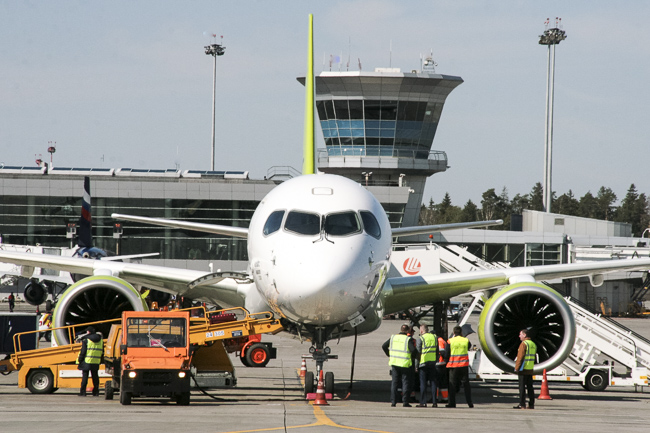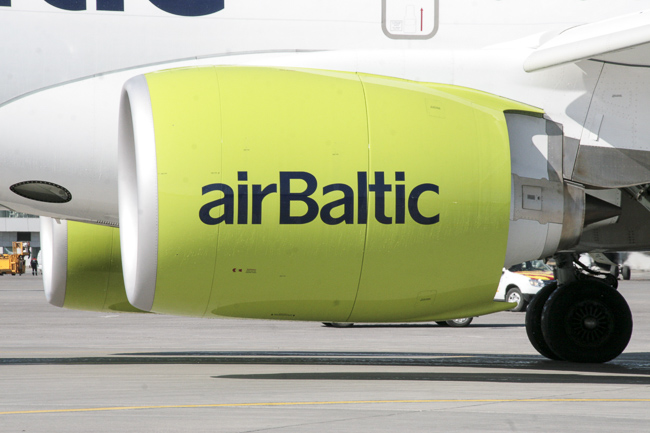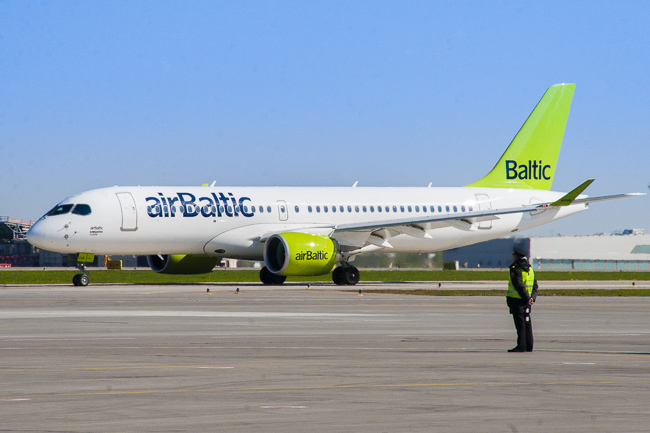To Moscow by CS300
The route Riga-Moscow airBaltic calls one of the main routes in its route network.
"airBaltic plans to transfer all flights on the Moscow-Riga route to this type (CS300)," - said airBaltic production director Martin Sedlacki at the presentation of the CS300 aircraft at Sheremetyevo Airport.
The airline operates 4 flights a day between two capitals (24 per week). There are only three directions in which the airline performs flights more often - these are the capitals of the Baltic States. "All cabin crew members speak Russian.", - notes Martin Sedlacki.
Now airBaltic operates flights from Riga to Moscow, St. Petersburg and Kazan, but in 2018 the airline plans to open new directions to Russia.
airBaltic - launching customer of CS300 aircraft
The first CS300 aircraft airBaltic received in November last year, and performed a test passenger flight in December. After completing ground training and personnel training, the airline has been actively operating the CS300 for its network of routes for three months already.
«The aircraft is very sophisticated, but it is already beginning to please,» - the representatives of the airline told journalists.
«The airline has already received and operates 3 CS300 aircrafts and within a few weeks there are five more aircrafts to receive. By July the airline will have 8 CS300 aircrafts in the park», - notes Martin Sedlacki.
airBaltic plans the new CS300 to gradually replace its fleet of Boeing 737 aircrafts.
By the end of 2019, the national carrier of Latvia is planning to get 20 Bombardier CS300 aircrafts.
Comfortable and spacious interior
Both airBaltic employees and passengers positively assess the placement of passenger seats according to the 2 + 3 scheme - only five in one row.
"It's convenient when passengers choose seats in the cabin depending on the number of travellers. If you travel together, then, as they say, the third is superfluous. By the way, the seats are not the same as on the CS100 of the Swiss airline Swiss International Airlines (used by the German company ZIM Flugsitz), but still convenient and easy. "
Positive feedback was received by the interior lighting, made on the basis of modern LED lamps, with the "mood lighting" mode. The air conditioning system is well designed: unlike some previous-generation aircrafts, the temperature regime is maintained without noticeable differences throughout the length of the cabin.
In addition, airBaltic employees note "very large baggage volumes" of the aircraft. "On other types of aircrafts, we had problems with the placement of all baggage and cargo when all seats in the cabin were occupied, but on the CS300 such questions don’t arise."
An exceptionally low noise level is observed during takeoff, landing and cruising flight mode, both inside and outside. When the aircraft is on the apron, it is almost impossible to determine the noise level from the outside, whether an auxiliary power unit (APU) is on or not.
Passenger flow on the route Riga-Moscow increases
In January-April 2017, airBaltic's passenger traffic between Riga and Moscow increased by 20% compared to the same period in 2016, the airline's director of airBaltic in Russia and the CIS, Andrei Larchenko.
By the end of the year the airline plans to transport 230 thousand passengers on this route.
In total in 2017 the airline plans to transport about 400 thousand passengers from Riga to Russia.
Bombardier CS300 - modern, quiet and economical
"The Bombardier CS300 is the most modern aircraft that is now available in the aircraft market. Therefore, we started using it in this market, where comfortable conditions for transportation are required. ", - says airBaltic production director Martin Sedlacki.
"Avionics of this aircraft meets the highest requirements. The same avionics is installed only on the most expensive business jets. And when I first flew this airpcraft, I was surprised, because it's so quiet that I didn’t realise that I took off. ", - notes Sedlacki.
"It is 21% more fuel efficient than existing aircrafts", - said the airline representative.
The passenger capacity of the new aircraft is 145 people in a two-class configuration.
Indeed, the interior of Bombardier CS300 has wide chairs.
Roomy luggage racks.
Big windows.
No longer regional - the range of flights has increased
«The range of CSeries aircrafts is up to 6000 km with full passenger loading. The aircraft can fly more than 6 hours, which opens up great opportunities in geography expansion for operators», - says marketing manager of Bombardier in Russia and CIS Kirill Mayorov.
As the representative of Bombardier says, "This aircraft can perform non-stop flights from London to New York in a fully business-class layout for 42 seats."
So, on March 25, 2017, as part of the tests, the CS100 aircraft made a non-stop transatlantic flight from the John F. Kennedy Airport (New York, USA) to London City. (Route 5830 km without taking wind into account).
«During the flight up to 6-6,5 hours passengers feel absolutely comfortable. This is confirmed by the announced flight Riga - Abu-Dhabi with a distance of more than 4.5 thousand km, which airBaltic will open this year», - Mayorov said.
"Such destinations as Riga - Abu-Dhabi, which airBaltic can cover in view of the current fleet of Boeing, certainly will open on the CS300," - says Martin Sedlacki.
«AirBaltic will open a new route" Riga - Abu Dhabi "(4,500 km) on the Bombardier CS300 aircraft in October. Also, the airline has already opened long-haul Riga - Madrid direction», - he said.
The pilot in the cabin feels comfortable
The reporters of Aviation EXplorer had the opportunity to talk to the first pilot.
The first pilot Ainis Martuzans said that he became a pilot, graduating from the Balashov Higher Military Aviation School of Pilots - an air school in Balashov, Saratov region. And, indeed, the list of the graduates of Balashovskiy VVAUL contains a record: «Martusans Ainis Petrovich».
He flew An-24, An-26 and other types of aircrafts that are part of the Military Transport Aviation. On dismissal from the ranks of the Armed Forces, Ainis went to civil aviation, where he worked for twenty years. Today, his raid on all types of aircrafts is about 14 thousand hours.
"This aircraft is the best known type to me," - our interlocutor stated.
Before he mastered the Bombardier CS300, he spent a lot of time at the control wheel of the Boeing 737. The Canadian aircraft was the first for the pilot with a side handle.
We asked what else distinguishes CSeries from Boeing?
"You know, in such cases, pilots joke that the sensations are like moving from the Opel to the Mercedes. In fact, it's about the same as it really is, "- answers our interlocutor.
Since the certificate of the type on the Boeing 737 of the very first variant that was received back in 1967, the aircraft, despite numerous upgrades, still carries the elements of that distant era. "Entering the cabin there are so many tumblers! And CSeries is a modern "computer" aircraft. In its cabin you feel comfortable.The eyes are resting! And everywhere the crew is helped to carry out the flight tasks by the latest computer technology. "
First comes the check-list. For the aircrafts of the past generation, it is «on paper». "And now we enter the cabin and start reading it on the screen. The aircraft itself warns us about what has been done, and what remains to be done, informs about the newly received introductory notes. "
For example, the choice of flight parameters. The on-board computer calculates the optimum values. The crew is given recommendations on the choice of flight parameters, with an explanation of how much can be gained by fuel consumption by changing the initial data. Accordingly, the crew requests the permission of the dispatchers to change the parameters.
The CS300 pilot cabin is a two-seated cabin, and each seat is equipped with an aircraft control knob. Simultaneous management of two pilots is prohibited. If such things happen (both hands are in motion at the same time), the on-board system immediately issues a warning - the "double input" case. In order to take control ononeself, the pilot must use a special button.
Low fuel consumption
From the point of view of the economy of the airline, fuel consumption has great importance. At the level of 37 thousand feet (FL370, 11280 meters), the fuel consumption of a fully loaded aircraft such as CS300 is only 1,700 kg - this figure is from Bombardier's marketers.
For comparison: on narrow-bodied machines of the previous generation of the same capacity it is more than two tons. The most "running" echelons for passenger flights of jetliners are in the range of 38-40 thousand feet. And the CS300 can climb higher, to FL410 (12500 meters). Since on the first flight of CS300 in Sheremetyevo there were only 70 passengers, the mass of the aircraft allowed to climb quickly to this height, which was done. The fuel consumption on this flight was less than two tons. The maximum speed at this level corresponds to the flight Mach number M = 0.82.
"We still have less experience of flying this type of aircraft," - Ainis Martuzans told us and went to prepare for the flight to the base airport.
Russia and CSeries
The presentation of the representative of Bombardier at the conference "Aviation financing and leasing in Russia and the CIS" on April 26, 2017 contained information that, as of the last month, there were eight CS100 / 300 in commercial operation, which by then transported more than 525,000 passengers , carrying out about five thousand flights to more than thirty airports.
So far, Bombardier can not boast of such large orders portfolios for its new aircraft, which were received by Airbus on the A320neo and Boeing on 737MAX. At the same time, CSeries has contracts with domestic lessors. A fairly large order was placed by Voronezh leasing company "Ilyushin Finance Co." (IFC). However, during the implementation of the CSeries project, Bombardier experienced a number of difficulties with the launch of series production and perfection of the standard aircraft design. There was a significant over-expenditure for R & D and production, and the supply of marketable products shifted by several years.
The aircraft manufacturer had to apologise to its clients on several occasions because it was impossible to fulfil its obligations under the agreements signed earlier. Thus, agreements with the IFC have been revised several times. Recall that the first agreement with Bombardier and IFC signed in 2011, and in winter 2013 signed a firm contract providing for the start of shipment of marketable products in 2015.
However, it had to be reviewed due to the backlog from the originally agreed schedule of deliveries and technical difficulties that arose with the manufacturer with the development of the new aircraft to the declared figures and the production of its serial production. In addition, Canadian government agencies did not provide the Voronezh company with the promised funding for supporting the export of high-tech products.
During the summer of 2016, it became clear that the order of the IFC was reduced from 32 to 20 CS300, and there was also the postponement of the delivery dates - now they are scheduled for the period from October 2018 to November 2021. Previously made advance payments were transferred to other products of the company - turboprop aircraft of regional class Q400. According to the information on the website of the Voronezh company, it expects the first Q400 in the first half of 2017, and five more - until November 2018. Recently, Bombardier confirmed that IFC has firm orders for Q400, and that a couple of such machines will be put into operation by the Kenyan airline Jambojet. By agreement of the parties, the African air carrier will receive both aircrafts before the end of this year. Along with this information, it was confirmed that IFC remains among CSeries customers.





